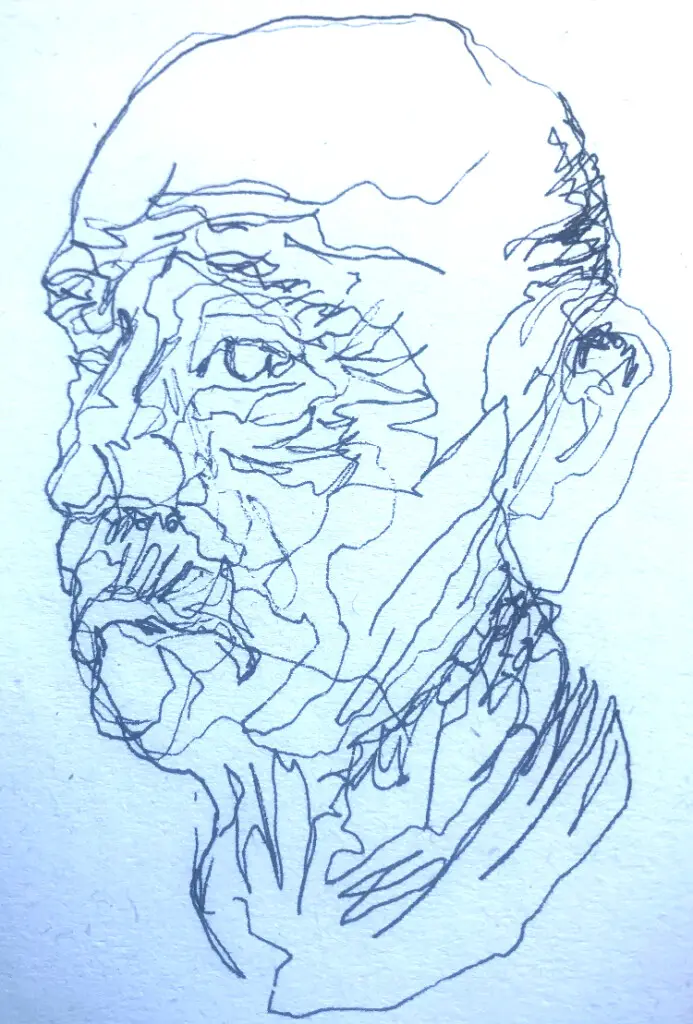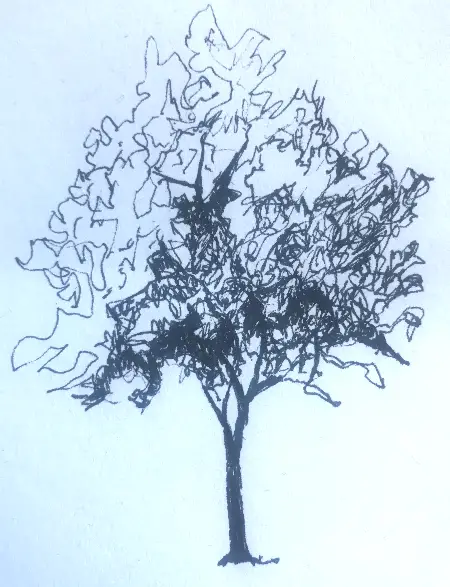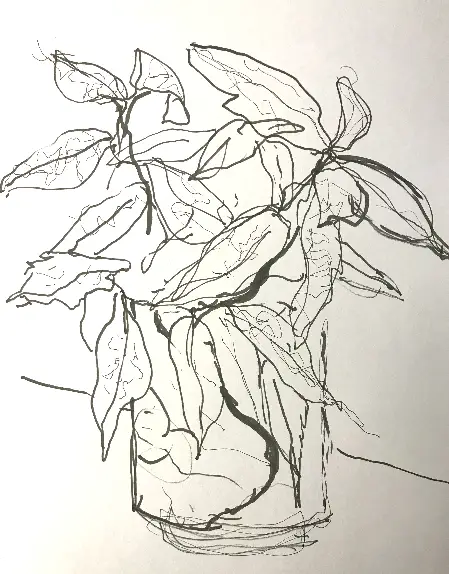How to Make the Best Continuous Line Drawings
Continuous line drawing is an activity many young artists are introduced to expand and strengthen their hand-eye coordination, speed, and understanding of line drawing techniques.
As a general rule, to generate a continuous line drawing, you will set your pen or pencil on the paper's surface and begin drawing your subject of observation. When drawing, keep your drawing instrument moving on the paper; this is vital if you want to generate a continuous line.
You might want to know how to do a continuous line drawing to improve your perceptional skills. It's a technique that not many artists are using and, in many ways, is a form of art within itself.
It also can speed up your sketches without having to stop what you're drawing.

How to Practice Line Art
When drawing on a piece of paper, line drawings are carefully laid out and have a specific look. Each line is placed where the overall shape is drawn and then has detail added into the basic outlines.
This is the standard way to create a drawing that always starts as a sketch. There is also another method where a drawing is completed using a continuous line. How to create a continuous line drawing.
This method is very different than a simple line drawing since the line that is on the paper remains unbroken at all times.
The reason for this is to enable an artist to capture an image that will allow more eye and hand coordination.
This technique also allows you to look at a model and your drawing in real-time. As a continuous line drawing develops, the outline and shape are fully enclosed by the same lines.
Details are then added inside that frame but need to be carefully placed so that any continuous lines don't intersect too often.
You May Also Like:
- What is the Difference Between Blind Contour and Contour Line Drawing?
- How to Draw Without Looking at the Paper
- How Do You Draw a Blind Contour Drawing?
- What Are the 3 Types of Contour Drawing?
Continuous Line Drawing Skills
You have to be creative when choosing where continuous lines are going since there is a risk of running over the same lines too often. Not only does this make your drawing look messier, but it can also make the detail appear disorganized.
It's a skill that you can practice pretty often and helps strengthen your drawing ability. Since continuous line drawings will encounter different styles, only your perception of how they go together as a drawing.
This style was actually developed by the world-famous artist Pablo Picasso, and he perfected this technique.
It may appear childish in many ways, but it is a calculated decision that is determined as you draw each image. Some artists have turned continuous line drawings into an elevated and highly stylized art form.
Even big companies like NIKE, Nissan, and Adidas have embraced this drawing skill and featured these drawings in their ad campaigns.
Skills developed when Drawing with a Continuous Line:
- To build visual acuity and eye/hand relationship
- To encourage a greater variety of line and improve line quality
- Reduce tentative, sketchy mark-making and decrease erasing
- To expedite the process of drawing by coupling contour and value building
To Build Visual Acuity and Eye/Hand Co-ordination
How do we interpret what we see when it comes to detail that goes into a continuous line drawing? As an artist, you will also have your own opinion on how continuous lines will appear.
This gives you plenty of freedom to decide. On how lines are being drawn and how they relate to what you're drawing. Visually, any object lines can be tight or loose as long as the line is never broken.
If you're using a pencil, the applied pressure is also carefully controlled to give certain lines more definition.
It's at this level of perception that you can decide where lines intersect and create detail. The relationship that you will need to develop between your eyes and hand will need to be critical where lines are added.
The issue of being accurate is not the goal here. That's why these line drawings often look frantic and childish looking.
To Encourage A Greater Variety of Lines and Improve Line Quality
When you first start making these kinds of drawings, don't expect to be impressed by your first attempts. This technique is a learning process that will actively involve ongoing experience and practice.
What this does is going to help you to develop the skills needed to create drawings that use a continuous line. It's also a customized skill that doesn't rely on just drawing skills but line plotting and determining where lines are flowing.
I recommend that continuous lines should flow like water that wind over an imaginary topography. This basically means that you plot your lines to intersect and represent details and shadows.
Depending on the contrast you see on an object, lines can fall across your drawing to give the impression that light and shadow are represented in your drawing. This can also create drawings that give further depth and detail to have higher contrast notes.
Reduce Tentative, Sketchy Mark Making and Decrease Erasing
With traditional sketching methods, you will be making many controlled lines that will create your picture. Continuous line drawings are designed to reduce the need to make repeated sketch marks.
The concept of a drawing that's fluid-like helps increase your hand's movement to complete a picture. There is less reason to go back and make any corrections using an eraser.
This drawing method also speeds up the action of drawing without needing to break the action or pace of drawing. This uninterrupted method will see pictures completed in shorter amounts of time no matter what kind of object you're drawing.
When making traditional sketches, the number of calculated lines that are put onto paper often takes more considered time. Continuous drawings do need calculated drawn lines that are split-second decisions.
To Expedite the Process of Drawing By Coupling Contour and Value Building
Every continuous contour drawing will have specific values that give each drawing self-worth in how you perceive the object is shown.
The shape of an object can have visual aspects that make it appear appealing but aren't limited to giving other viewers a chance to see something interesting within that drawing.
The amount of careful decision-making while you're drawing will determine how interesting the final picture will appear.
An exciting aspect of continuous line drawing is that it's allowed to freely look at an object and at your drawing while it's being drawn.
To give yourself a bit more value at your drawing skill, you can choose to make a blind continual contour drawing instead. This will help you have better control of what you perceive are contour lines. It will also give you better control of your special awareness.
Line Drawing

When you make line drawings, you're consciously sketching out shapes and forms that are meant to appear natural.
They can be shaded and finished so the images will look natural and more three-dimensional. If they are done correctly, they can appear as realistic as a black and white photo.
But as I've mentioned before, line drawings are readily accepted as works of art because of the techniques.
Line drawings also take much more planning and will use various sketches that help give ideas beforehand. While drawing exercises are meant to strengthen skills, making a line drawing into an exercise often becomes a blind contour.
In the end, these images look cartoonish but do have an essential role in making your drawing skills better. It has everything to do with hand placement and positioning.
Single Unbroken Line Drawing
This exercise is also called a continuous line contour and is completed in two ways to give you more variety. The first method is having full access to looking at your object or model while watching what you're drawing.
This process is more accessible than the second version and actually helps you make instant decisions when adding details and contour lines. The best part is that you're allowed to make obvious mistakes.
The second example is making a blind contour drawing that's a continuous unbroken line. And the results you'll get might surprise you when you see how you imagined your drawing to look.
The significant rule to blind contour drawings is that you cannot look at your picture. The hardest part is getting your center point to return to center the image you have in your head. The better you get at this gives you better hand control likewise.
Line Drawings
Let me return once again to address line drawings and how they relate to continuous line drawings. You might not think that there's much connection between these two, but it does have two significant points.
The first point that makes a considerable comparison all related to emotion. One of the most moving aspects of line drawings is how emotion will impact anyone viewing your drawings.
It can easily be felt with continuous line drawings since the visual emotion brings out instant emotion from the drawing's visualized style and simplicity.
The other aspect that is related to these two is the illusion of motion and movement. Striking signs of objects and characters in active poses will have an instant reminder that movement is part of your picture.
Both of these examples can help tell a story of what may be happening visually.
Continuous Line Drawing of the Face
Faces are always the mirror of their personality. This is amplified through the continuous line method and allows others to see your alternative creative side.
Faces often help convey lots of emotion when it comes to how you show their expressions. You can also get creative about how each of the facial features ties together and how well blended they'll become.
At first, these images won't be so easy if you're not familiar with drawing faces.
It will take more than a handful of these line sketches to get it right, but you will adapt to your mistakes as you find out what works and what doesn't.
Not every face will be drawn the same way, so test your skills at drawing angles, profiles, and plenty of emotional expressions.
This can include smiles, frowns, smirks, and facial ticks. The better you can capture a portrait using a single continuous line will show how well you get the hang of it.
Continuous Line Drawing of The Human Form
This will be an exciting challenge since the human body is always an excellent subject for drawing and artistic study.
The body is one of the most fascinating forms that have always been popular among artists. But how does this work out when you have continuous lines used.
This is where you'll need to use a bit of imagination, knowledge of anatomy, and awareness of where lines are connecting.
When drawing a body in motion, it's essential to give poses that best give an idea movement or motion is happening.
This way, you'll have a better pose, giving a higher sense of motion and action within your drawing. Static figures are popular, representing a message, yet anything related to motion is visually more interesting. This is why you need to choose a pose that will best appeal to your interests.
Continuous Line Drawing of Still Life

When people mention still life, there is always a big question of what they're talking about. In a traditional sense, all still life drawings are talking about anything arranged onto a table or setting.
These are usually fruits and flowers that are arranged in an attractive grouping. These aren't limited to flowers and fruits and can also include objects of interest and anything that appeals to your artistic side.
The other significant part of still life is the composition of light. This is carefully observed in many still-life drawings that show light coming from one direction, giving incredible contrast.
This will be one major hurdle that you'll need to consider adding high contrast highlights into a single line drawing. This is better if you study an image from a photograph, but if you have a real still-life setting, you'll have to squint one eye to spot highlights better.
In Conclusion
Perhaps this now gives you more info on how to do continuous line drawing. The next thing you'll want to try is seeing how well you do with this drawing exercise.
Since every continual line drawing will be different, you should save every practice sketch you make. This will give you a growing collection that you can see how you've progressed over time.
You can also display them as individual works since this art form will appeal to art enthusiasts too.
Create Art With My Favourite Drawing Resources
General Drawing Courses. I like Udemy if you want to develop your knowledge of drawing techniques. Udemy is an excellent choice due to its wide range of creative courses and excellent refund policy. They often have monthly discounts for new customers, which you can check here.Use my link.
Sketching and Collage. Take a look at this sketching resource I have created.Use this link.
Proko. Is one of my favorite teachers who surpasses in the teaching of Anatomy and Figure drawing. Prokos course breaks down the drawing of the human body into easy-to-follow components aiding the beginner to make rapid progress. For this,I really like Proko.
Art Easels. One of my favorite ways to draw is by using a drawing easel, which develops the skill of drawing on a vertical surface. TheH frame easel is an excellent vertical way to add variety to the style and type of marks you create when using a drawing board.
To see all of my most up-to-date recommendations,check out this resource I made for you.
Sources:
- https://elumina.me/blog/the-fearless-one-line-picasso-drawings/
- https://www.quora.com/What-is-a-continuous-line-drawing
- https://www.quora.com/How-can-I-learn-to-do-continuous-line-drawing
- https://medium.com/@michellegemmeke/the-art-of-one-line-drawings-8cd8fd5a5af7
Source: https://improvedrawing.com/how-to-do-continuous-line-drawing/
0 Response to "How to Make the Best Continuous Line Drawings"
Post a Comment